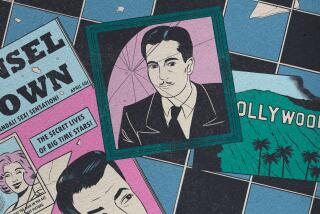A New Plague Tests Resolve of Our Global Village
- Share via
On my first day as a medical reporter, I pitched a story about AIDS. This was March 1983, 21 months after federal officials reported that five gay men in Los Angeles had developed a rare pneumonia, the first glimpse of the emerging epidemic.
“How many people have it?” my editor asked.
“About 1,100 nationally.”
She paused. “Is that all? I don’t know. . . .”
“The numbers are going up,” I offered.
“OK,” she said, without interest. “But keep it short.”
For a long time afterward, I marveled at my editor’s naivete. AIDS would etch itself into the cultural landscape, changing the way we thought about illness, sex, drug research, death. The epidemic seemed to shake our faith in quick-fix science, our abiding American confidence that life is under our complete control. By the mid-1980s, I was certain that nobody anywhere would dismiss the danger of a sweeping epidemic, as my editor had.
But now when I recall that conversation, I know that I, too, was naive. I believed that as the number of patients increased, people would start to care and that until researchers found a cure or vaccine, the public would pay attention.
There were years, of course, when AIDS riveted many people. I worked in the Bay Area, epicenter of the epidemic, and after Rock Hudson died I couldn’t keep AIDS stories off the front page. As gay newspapers filled with obituaries of young men, as funerals became a way of life, the gay community took to heart the need for precautions, including safer sex. AIDS doctors were in constant demand as public speakers. AIDS organizations attracted generous donations. And money poured in for research.
*
In just a few years, scientists learned what causes AIDS, how it spreads, how to treat its awful complications, how to fight the virus. Researchers liked to say that never before had science come so far so fast. Such boasts could seem callow in the face of a fatal epidemic. Once, after interviewing a famous scientist about his AIDS discoveries, I flipped through my Rolodex to find a patient to call for reaction and realized that all my sources were dead.
But the pride of scientists was justified. Three years ago, the obits vanished from the gay papers, replaced by ads for new AIDS drugs. In San Francisco’s gay neighborhoods, people whispered the unthinkable: Nobody’s dying anymore.
In fact, people continued to die. The epidemic had shifted to poorer communities, to African Americans and Latinos, to people who “did not have friends who would write obits about them,” said Pat Christen, executive director of the San Francisco AIDS Foundation. “It’s distressing to me that their deaths were unintentionally trivialized.”
Still, for patients with money and insurance and the will and skill to adhere to a complicated regimen of dozens of pills a day--for people lucky enough to tolerate the new, potent medications--the breakthrough was miraculous. Doctors told of patients who walked out of hospices and returned to work or the gym. Nationally, AIDS deaths fell 42% from 1996 to 1997.
The following year, deaths fell only 20%. Nobody knows if this marked an inevitable dip as a larger portion of patients received treatment, if the new medications had only limited effectiveness, or if drug-resistant strains of the virus had emerged. Whatever was going on, the public in general and the gay community in particular had apparently already decided that the AIDS crisis had passed.
Syphilis and gonorrhea are on the rise in gay communities across the country. So are new HIV infections. “Barebacking”--sex parties without condoms--have become popular in San Francisco, provoking a volley of condemnation and defensiveness reminiscent of the bathhouse days.
Young gays, babies when the epidemic began, “are almost yearning for that free and frolicking time they never had,” said Dr. Martin Fenstersheib, Santa Clara County health officer. What about AIDS? Again and again, Fenstersheib hears this: “If I do get it, I can take some medications. It’s not so bad. It won’t kill me.”
Fenstersheib and others in public health get few invitations to speak on AIDS these days. A number of AIDS organizations are reportedly struggling for funds and volunteers.
The positive spin--the popular explanation among AIDS activists who have become public relations pros over the years--is that people are simply tired. “It’s exhausting to maintain the level of vigilance and effort that one must maintain to battle an epidemic,” Christen said. But it’s impossible to look at where we are without thinking we’ve come full circle.
“Nobody’s interested anymore,” said San Francisco AIDS specialist Dr. Marcus Conant, who has always been known as “the Cassandra of AIDS,” because he warned of the dangers before the disease even had a name. “From a social point of view, I don’t think we’ve learned anything.”






